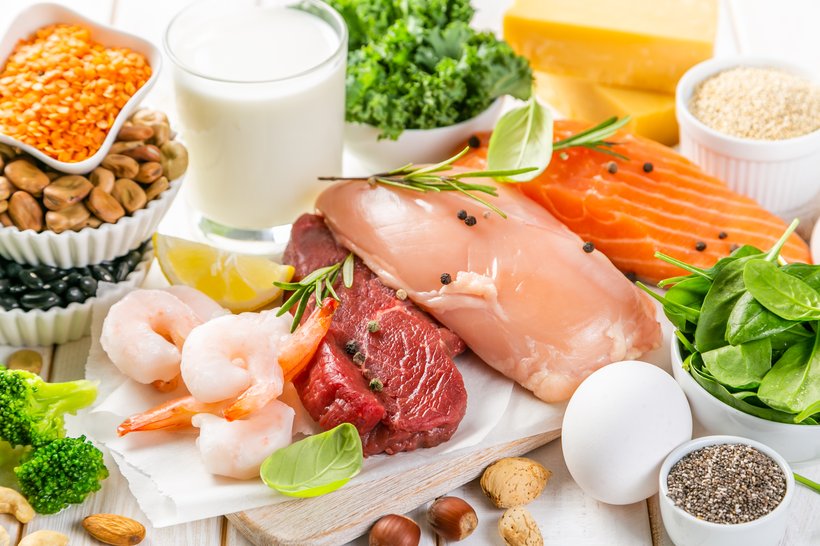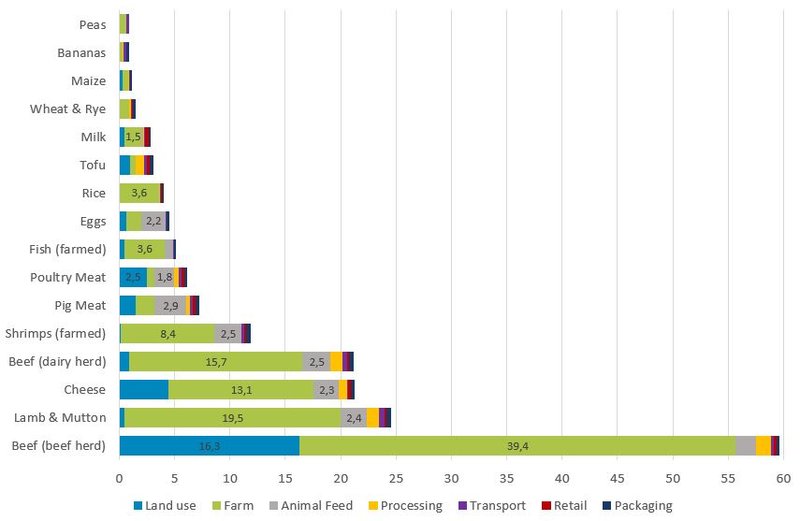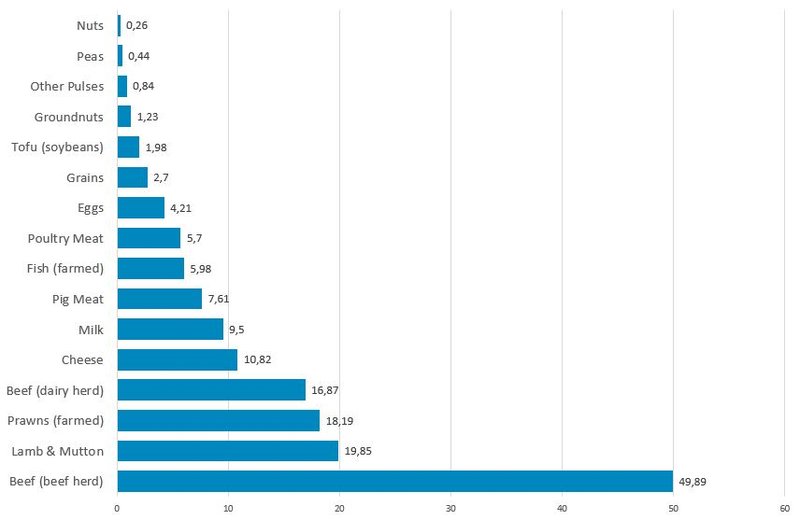
Published on Oct. 7, 2021
Eggs, the most sustainable animal protein?
Ensuring everyone in the world has access to a nutritious diet in a sustainable way is one of the greatest challenges we face. For an agricultural activity to be counted as sustainable agriculture, it should satisfy three pre-conditions: it should not upset the natural environment, while at the same time it should be something that a farmer can afford to do, and it should meet society's needs (think of animal welfare ). To summarize, sustainable agriculture should be economically viable, socially responsible and ecologically sound.
This article focuses on the environmental impacts of egg production. Egg producers have pushed for decades past the boundaries of innovation by investing in agricultural research and adopting practices with the goals of improving animal welfare, increasing productivity, reducing emissions, and enhancing sustainability. Ensuring that the production of eggs continues sustainably is essential for people and the planet. We have listed the use of land and the greenhouse gas emissions across the supply chain and per 100 grams of protein produced in the sections that will follow.
Land use footprint of food
How does the land footprint of different food products compare? Which foods used the most and least land in their production in terms of nutritional units: this gives a measure of how low or high-impact different foods are in supplying protein or energy/calories.
In the visualization below we show the land footprint of foods, measured in meters squared (m2) per 1000 kilocalories. Eggs, together with farmed prawns, require the lowest land use of all animal protein foods listed in the table to produce 1000 kilocalories. Surprisingly there is hardly any difference when comparing eggs to tomatoes!
Land use of foods per 1000 kilocalories

Greenhouse gas emissions across the supply chain
People across the world are becoming increasingly concerned about climate change, the recent report published by the Intergovernmental Panel on Climate Change highlights the importance to act on the short term. Food production accounts for one-quarter of the world’s greenhouse gas emissions. There is growing awareness that our diet and food choices have a significant impact on our carbon ‘footprint’. ‘Eating local’ is a recommendation we often hear – even from prominent sources like the United Nations. Intuitively this makes sense as transport does lead to emissions – but it appears to be one of the most misguided pieces of advice when looking to the GHG emissions across the supply chain of the different foods. Eating locally would make a significant impact if transport was responsible for a large share of food’s final carbon footprint, but for most foods, this is not the case as GHG emissions from transportation make up a very small amount of the emissions from food. The message should therefore be:
“what you eat is way more important than where your food traveled from”.
In the visualization below we see GHG emissions from different food products – from beef at the top to peas at the bottom. For each product you can see from which stage in the supply chain its emissions originate. This extends from land use changes on the left, through to transport and packaging on the right. This table clearly shows that there are massive differences in the GHG emissions of different foods: producing a kilogram of beef emits 60 kilograms of GHG’s (CO2-equivalents), while peas emit just 1 kilogram of GHG’s per kg. Animal-based foods tend to have a higher footprint than plant-based, but large differences are present among animal-based foods. Eggs clearly have the most favorable footprint of all animal protein considered in this study.
Greenhouse gas emissions of food across the supply chain

Greenhouse gas emissions per 100 gram of protein

Eating less meat, or switching to lower impact meats such as chicken, or eggs is the most effective way for individuals to reduce their dietary footprint. We know that the world is not going to abandon livestock farming any time soon, and there are a number of reasons we wouldn’t want it to: poultry farming is not only an important source of income for many households, it can also be a key source of nutrition in local settings. Especially in lower-income countries where diets lack variation, an egg a day can be an essential source of protein and micronutrients. Having access to these essential nutrients can improve their development and overall health and wellbeing. Or as we say, an egg a day might keep the doctor away.
For further reading:
- Poore, J., & Nemecek, T. (2018). Reducing food’s environmental impacts through producers and consumers. Science, 360(6392), 987-992. This is data from the largest meta-analysis of global food systems to date.
- Hannah Ritchie and Max Roser (2020) - "Environmental impacts of food production". Environmental impacts of food production - Our World in Data, Published online at OurWorldInData.org (online resource).
- The local Food Movement Local Food Movement: Everything You Need to Know - EcoWatch



